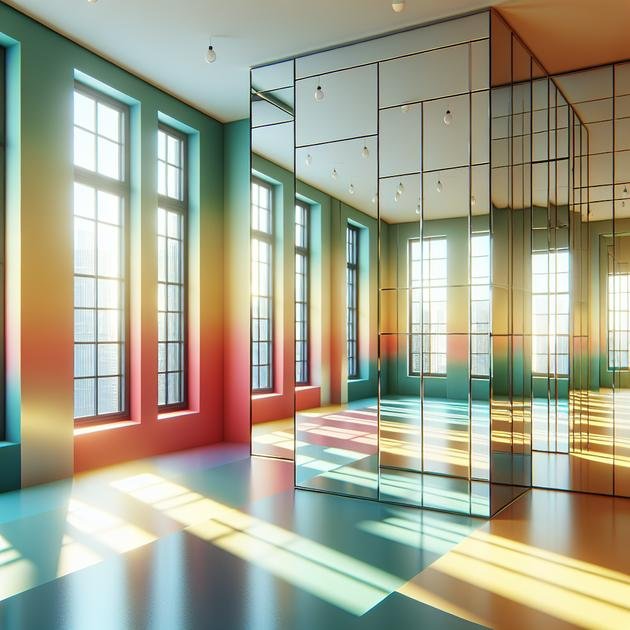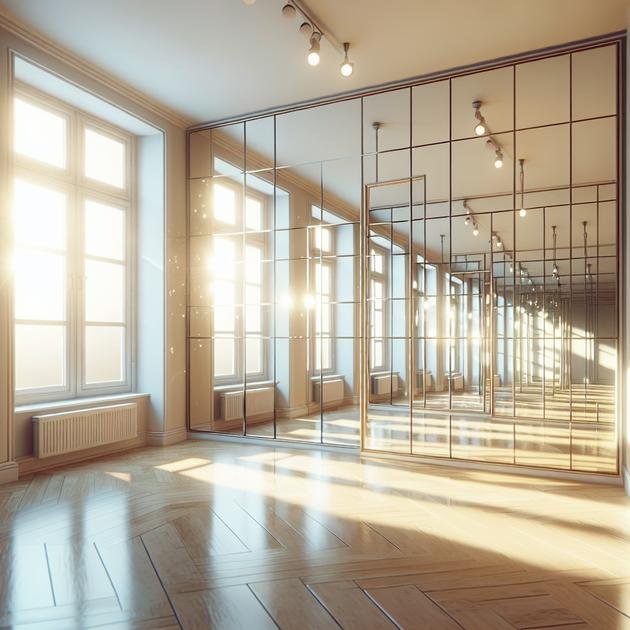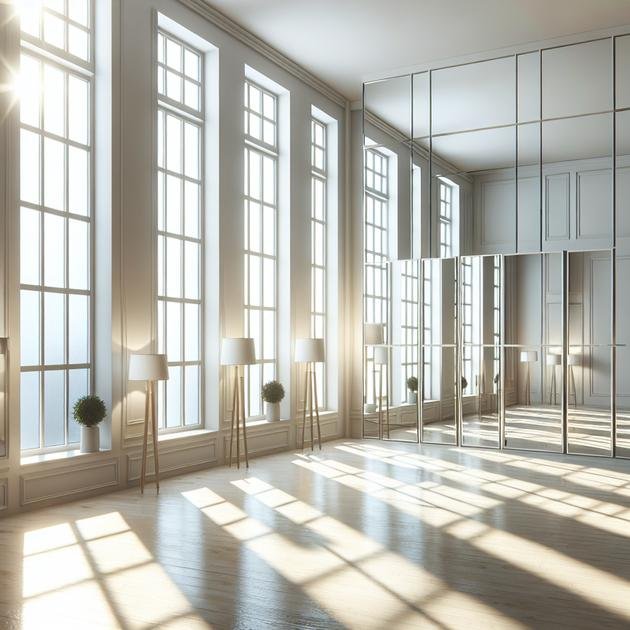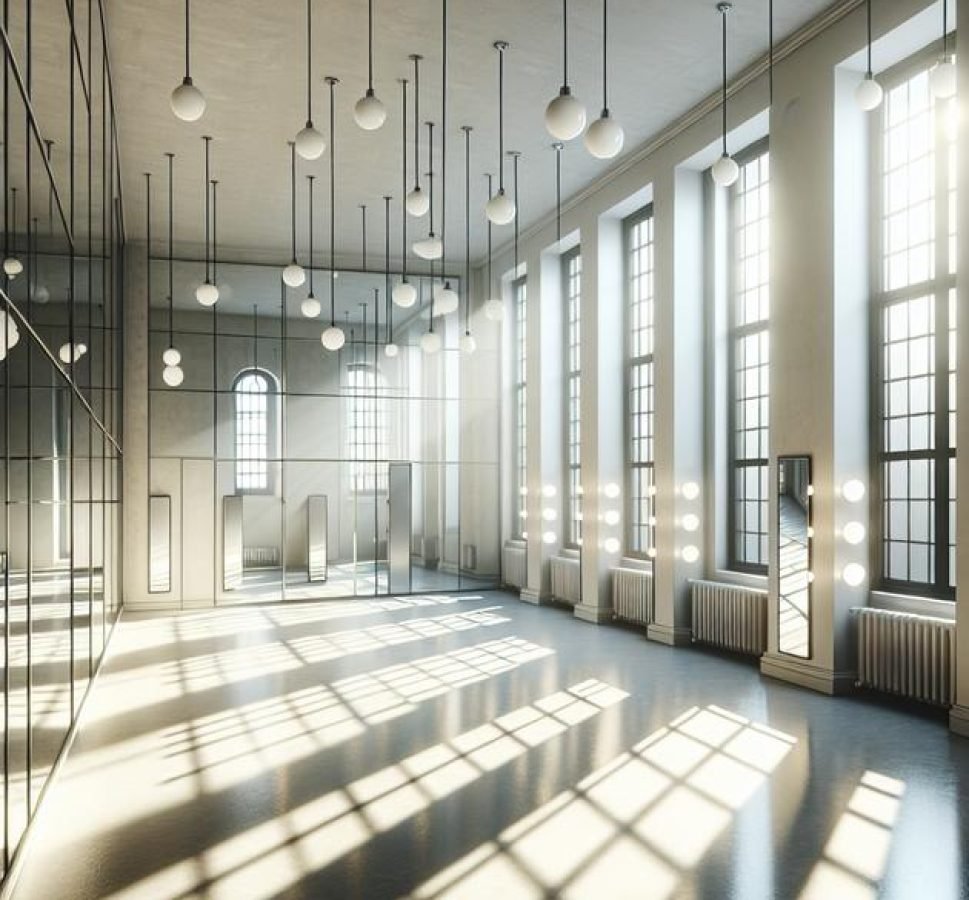Natural lighting design optimizes window placement, reflective surfaces, color choices, and shading to maximize sunlight, improve indoor comfort, reduce energy use, and enhance health and mood in home environments.
Natural lighting design changes the way your home feels, making it brighter and more inviting. Ever wondered how the right sunlight can brighten not just your room, but your mood too? Let’s explore how you can make the most of natural light at home.
understanding natural lighting design basics
Natural lighting design is the art of using sunlight effectively to illuminate indoor spaces. It involves understanding the movement of the sun, window placement, and how light interacts with surfaces. Good natural lighting reduces the need for artificial lights, saves energy, and creates a warm, inviting atmosphere.
Key elements include using large windows, glass doors, and skylights positioned to capture maximum sunlight. The orientation of your home matters: south-facing windows typically allow the most light, while east and west provide softer morning and evening light. Effective design considers seasonal changes to maintain comfort throughout the year.
Materials inside the home also influence lighting—lighter walls and reflective surfaces can spread light deeper into rooms. In contrast, heavy curtains or dark colors absorb light and make spaces feel smaller. Planning your layout to allow sunlight to travel freely can transform your home into a brighter, healthier space.
benefits of natural light in home design
Natural light offers several important benefits in home design that go beyond just lighting up a room. It improves mood and mental health by increasing serotonin levels, which can lead to reduced stress and better sleep patterns. Exposure to natural light also helps regulate the body’s internal clock, promoting overall well-being.
From an energy perspective, natural lighting reduces reliance on electric lights during daytime hours, which can significantly lower energy bills. This eco-friendly approach supports sustainable living and decreases your home’s carbon footprint.
Natural light enhances the appearance of interiors by highlighting colors and textures more vividly than artificial lighting can. It creates a sense of spaciousness, making rooms feel larger and more inviting. Moreover, designing with natural light allows for creative architectural features like sunrooms, open-plan living spaces, and visually dynamic environments.
Incorporating natural light into your home can also support plant growth indoors, contributing to a healthier, fresher atmosphere. Finally, it increases property value by appealing to buyers who appreciate bright, energy-efficient spaces.
how window placement affects lighting
Where you place windows has a huge impact on the quality and amount of natural light inside your home. Windows facing south usually get the most sunlight throughout the day, making spaces bright and warm. In contrast, north-facing windows provide softer, consistent light, ideal for areas like studios or offices where glare should be minimized.
East-facing windows bring bright morning light, perfect for kitchens or bedrooms to help you wake up naturally. West-facing windows capture afternoon and evening sun, giving warm light but can cause overheating if not properly shaded.
The size and height of windows also matter. Taller windows let light reach deeper into rooms, while smaller or high-placed windows can provide privacy and light simultaneously. Using clustering of windows or corner windows can increase light flow and create interesting visual effects.
Window placement is also key to controlling glare and heat gain. Including operable windows helps with ventilation and temperature regulation, enhancing comfort. To maximize natural lighting, think about the sun’s path and how your home’s layout can capture light without sacrificing energy efficiency or privacy.
choosing the right window styles for light

Choosing the right window style greatly influences how natural light enters your home. Casement windows open fully outwards, allowing maximum airflow and ample sunlight. They are excellent choices for rooms that need bright, direct light.
Double-hung windows offer flexibility with two sliding sashes, letting you control ventilation and light. They are versatile and common in many home designs, balancing light and airflow well.
Bay and bow windows extend outward, creating nooks that capture light from multiple angles. These styles increase the amount of daylight entering and add a spacious feel to interiors.
Skylights are a fantastic option for bringing light into rooms where traditional windows aren’t feasible. They provide direct overhead light, brightening interiors and reducing the need for artificial lighting.
Fixed windows don’t open but allow uninterrupted views and continuous light flow. When placed strategically, they can brighten darker spaces and work well alongside operable windows for a balanced design.
When selecting window styles, think about the room’s purpose, desired light levels, and ventilation needs. Combining different styles can optimize natural lighting while enhancing architectural character.
using skylights to enhance daylight
Skylights are an excellent way to bring natural light into parts of your home that traditional windows can’t reach. They allow sunlight to enter from above, brightening rooms evenly and creating a sense of openness. Installing skylights in hallways, kitchens, or bathrooms can add light where wall space for windows is limited.
Energy efficiency is another benefit, as skylights can reduce the need for artificial lighting during daylight hours, cutting electricity costs. Modern skylights come with energy-saving features like double glazing and UV filters to control heat and protect your interiors.
When placing skylights, consider the angle of the roof and the sun’s path to maximize light while avoiding glare or overheating. Ventilated skylights can also help with airflow, improving indoor air quality and comfort.
Skylights come in various styles such as fixed, vented, and tubular, each suited to different spaces and needs. Tubular skylights are perfect for small or dark areas, channeling sunlight through a reflective tube deep into your home.
Proper installation and positioning of skylights can significantly transform the ambiance of your home by bringing in abundant natural light in an elegant and energy-efficient way.
role of reflective surfaces in lighting
Reflective surfaces play a crucial role in enhancing natural lighting within a home. By bouncing light deeper into rooms, they help brighten spaces that might otherwise feel dim or shadowed. Materials like mirrors, glossy tiles, and polished wood can reflect sunlight, spreading it evenly and increasing the overall illumination.
Light-colored walls and ceilings act as natural reflectors, amplifying daylight and reducing the need for artificial lighting. Shiny furniture or decorative items also contribute by redirecting light around the room.
Using reflective surfaces strategically can create the illusion of larger spaces by making rooms appear more open and airy. It’s important to balance reflections though, as too much glare can cause discomfort. Placement and finish quality matter to ensure soft, pleasant light distribution.
Incorporating reflective elements near windows or skylights maximizes their effectiveness, helping natural light reach even corners. Overall, reflective surfaces are a simple yet powerful tool for optimizing natural lighting and creating vibrant living areas.
selecting colors that amplify natural light
The colors you choose for your walls, ceilings, and furniture have a big effect on how natural light behaves in your home. Lighter colors like whites, creams, and pastels reflect more light, making rooms feel brighter and more open. Using these shades on walls and ceilings helps maximize the light coming in through windows.
Darker colors absorb more light, which can make spaces feel smaller and dimmer. However, using dark colors strategically, like on accent walls or furniture, can add depth and contrast without sacrificing brightness.
Glossy and satin finishes also help bounce light around the room better than matte finishes. For example, a satin paint on the ceiling can reflect sunlight and spread it evenly.
Choosing colors with warm undertones can enhance the sunlight’s natural warmth, creating a cozy and inviting atmosphere. Cool tones, on the other hand, may give a refreshing and calm feeling, especially in north-facing rooms with less direct sunlight.
By thoughtfully selecting colors, you can amplify natural light and create a welcoming, well-lit home that feels cheerful throughout the day.
integrating shading solutions effectively

Effective shading solutions are essential for controlling natural light and maintaining comfort in your home. They help reduce glare, prevent overheating, and protect furniture from sun damage. Blinds, shades, curtains, and external shutters are common options that can be customized based on your needs.
Choosing the right shading depends on window orientation and how much light you want to filter or block. For south- and west-facing windows, consider heavier or reflective shades that reduce heat during peak sunlight hours. Lighter fabrics or sheer curtains work well on east-facing windows to soften morning light without darkening the room.
Automated shading systems offer convenience and efficiency, allowing you to adjust light exposure throughout the day without manual effort. They can be programmed to respond to the sun’s position, optimizing indoor comfort and energy savings.
Outdoor elements like awnings, pergolas, or louvers block direct sunlight before it hits your windows, minimizing heat gain while still allowing diffused natural light. This also helps preserve your indoor environment and improve energy efficiency.
Integrating functional and stylish shading complements your natural lighting design, balancing brightness with comfort and protecting your home year-round.
balancing privacy with natural lighting
Balancing privacy and natural lighting is key to enjoying sunlight without feeling exposed. Frosted or textured glass allows light to enter while obscuring views, making it perfect for bathrooms and street-facing windows. Window films with privacy features can also block visibility but keep rooms bright.
Sheer curtains offer a soft barrier, diffusing light and maintaining privacy during the day. Layering sheer fabrics with heavier drapes provides flexibility to adjust privacy levels as needed.
Strategic window placement is another way to balance light and privacy. Higher windows or clerestory designs bring in daylight while limiting sightlines from outside. Using shutters or blinds that tilt lets you control both light and privacy throughout the day.
Landscaping choices such as planting shrubs or installing decorative screens outside windows can also enhance privacy without sacrificing natural light. These green barriers add beauty while acting as a subtle shield.
Finding the right combination of glass treatments, window coverings, and architectural elements can help you enjoy bright, inviting spaces that feel safe and private.
common lighting design mistakes to avoid
One common mistake in natural lighting design is ignoring the sun’s path, which can lead to too much glare or heat in certain areas. Overlooking this causes discomfort and increases energy costs due to excessive cooling needs.
Another error is relying solely on large windows without considering privacy or insulation, which can result in reduced comfort and higher energy bills. Choosing the wrong window placement or style can limit the benefits of natural light.
Many also underestimate the importance of balancing artificial and natural light. Without proper layering, rooms may feel unevenly lit or dark during certain times of the day.
Using heavy or dark window treatments can block valuable daylight, while poor color choices can absorb light rather than reflect it effectively. Clutter or bulky furniture near windows can also obstruct light flow.
Failing to incorporate shading devices or adjustable coverings to control light leads to glare issues and overheating, especially in warmer seasons. Finally, neglecting maintenance of windows and skylights reduces light quality over time.
how to measure natural light in your rooms
Measuring natural light in your rooms helps you understand how much sunlight enters and where improvements are needed. One simple method uses a light meter, a device that measures the intensity of light in lux. This tool lets you identify bright and dim areas accurately.
To measure, hold the light meter at different spots and heights in the room, especially near windows and further inside. Record readings at various times of day to account for changes in sunlight.
If you don’t have a light meter, smartphone apps can provide an estimate of light levels. While less precise, they offer a quick way to gauge your space’s natural lighting.
Observing shadows and how the light moves throughout the day also gives qualitative insight into your room’s lighting. Note areas that get strong direct light and those that stay shaded for most of the day.
With this knowledge, you can make informed decisions about window placement, shading, or adding reflective surfaces to maximize natural light effectively.
combining natural and artificial lighting

Combining natural and artificial lighting creates a balanced and flexible environment. Natural light brings warmth and energy savings, while artificial lights offer control and consistency when sunlight fades or dims.
Layering light sources such as ambient, task, and accent lighting ensures all needs are met. Ambient lighting provides overall illumination, task lighting focuses on specific activities like reading or cooking, and accent lighting highlights design features.
Using dimmers and smart lighting controls helps adjust artificial light levels to complement changing natural light. This reduces energy usage and maintains comfortable brightness throughout the day and night.
Warm light bulbs blend well with daylight, creating a cozy atmosphere during evenings. Cool white bulbs can be used in work areas for better focus and visibility.
Proper placement of both window openings and light fixtures is important. Positioning artificial lights where natural light is limited or where shadows occur helps maintain consistent illumination and enhances room functionality.
impact of natural light on mood and health
Natural light has a profound impact on both mood and health. Exposure to sunlight helps the body produce vitamin D, which is essential for bone health and immune function. It also regulates our circadian rhythm, improving sleep quality and energy levels.
Sunlight boosts serotonin levels, a hormone that enhances mood and feelings of well-being. This can reduce symptoms of depression and anxiety, making naturally lit spaces beneficial for mental health.
Working or relaxing in environments with ample natural light can increase productivity and focus. It also helps reduce eye strain compared to artificial lighting, supporting overall comfort.
Seasonal affective disorder (SAD) is linked to lack of sunlight during darker months. Designing spaces that maximize daylight can help mitigate these effects by keeping interiors bright and lively.
Overall, incorporating natural light into your home design supports physical health and emotional well-being, creating a positive and inviting living space.
renewable energy aspects of lighting design
Incorporating renewable energy into lighting design helps reduce environmental impact and energy costs. Solar panels can be installed on rooftops to power lighting systems using clean, sustainable energy. This approach lowers reliance on fossil fuels and cuts down electricity bills.
Energy-efficient LED lights combined with solar energy create effective, eco-friendly illumination. These LEDs use significantly less power and last longer, complementing renewable energy use perfectly.
Smart lighting controls and sensors optimize energy use by adjusting light levels based on daylight availability. This reduces waste and makes systems more sustainable.
Integrating battery storage allows excess solar energy captured during the day to be stored and used at night, ensuring consistent lighting without relying entirely on the grid.
Designing lighting systems with renewable energy in mind supports greener living, promotes sustainability, and contributes to reducing carbon footprints in residential spaces.
smart home features for lighting control
Smart home features for lighting control provide convenience, energy efficiency, and improved ambiance. With automated systems, you can control lights remotely via smartphone apps or voice assistants, allowing you to adjust brightness and color without being in the room.
Motion sensors and timers help save energy by turning lights on only when needed. For example, lights can automatically turn off when a room is unoccupied, reducing unnecessary power use.
Integration with other smart devices like thermostats and security systems allows for cohesive home automation. You can program your lighting to adjust based on time of day, occupancy, or even weather conditions.
Dimming features offer customizable lighting moods for different activities, such as relaxing, working, or entertaining. Some advanced systems also learn your habits and adjust settings automatically for optimal comfort.
Overall, smart lighting controls enhance your living environment by merging technology with natural light, increasing both functionality and style.
Bringing It All Together
Maximizing natural lighting in your home is more than just opening windows and doors. It involves smart design choices like window placement, the right window styles, and thoughtful colors that reflect light. Using shading and privacy solutions helps you control brightness while keeping your space comfortable and secure.
Combining natural light with artificial lighting and smart home technologies creates a balanced, energy-efficient environment. This improves not only the look and feel of your home but also your health and mood.
By understanding these key elements of natural lighting design, you can create a bright, inviting home that’s both beautiful and practical.





